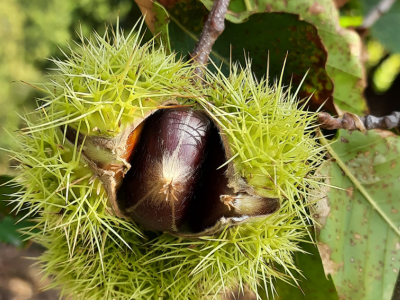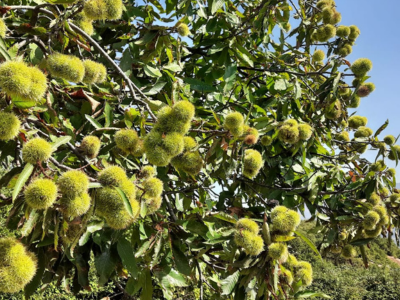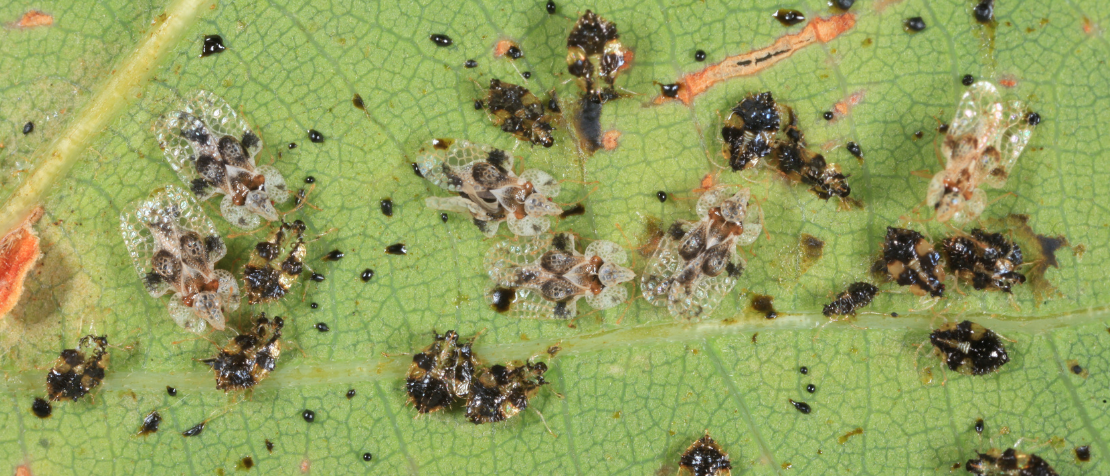.png?sfvrsn=d1daa25e_3)
Natural enemies are friends of the forest
FAO/Robert Atanasovski
13/10/2025
Wilt symptoms, brownish discoloration, dieback and premature death. This damage is discovered on a sunny day in June 2024 in the forests of the southern part of Skopje, North Macedonia, on a young tree of heaven (Ailanthus altissima).
And with that, a sigh of relief emerges from the deep lungs of the forest.
What if a disease caused by a fungus could be a good thing? It might seem unlikely, but it is, in fact, possible, if the target of the disease is a highly invasive forest tree species.
The tree of heaven, unlike what its name would suggest, is nothing close to divine. Rather, it is an invasive alien tree species found in several countries across Europe and Central Asia and on all other continents but Antarctica. It is very fast growing and harms native plants by releasing toxins into the soil, forming dense thickets and stealing sunlight, water and nutrients. Thus, control and eradication of the tree of heaven are necessary on many sites for forest ecosystem preservation.
The fungus Verticillium dahliae was observed for the first time in North Macedonia this past year by Erhard Halmschlager from the Institute of Forest Entomology, Forest Pathology and Forest Protection (BOKU University) in Vienna during an excursion of the Forest Invasive Species Network for Europe and Central Asia (REUFIS). The fungus is a natural antidote – though, in and of itself, it is not enough to wipe out highly invasive tree of heaven naturally.
Working with nature’s resources
To understand the mechanism at play here, we must first look at the concept of biological control. An essential component of integrated pest management (IPM), biological control involves the use of natural enemies against pests and invasive species. In a broad sense, natural enemies are organisms that cause the death or impairment of other organisms, such as pests or invasive species. The objective of all biological control programmes in forestry and agriculture is to reduce the impacts of pests to below an acceptable threshold. Such techniques can be used alone or in combination with other IPM control methods.
There are three main approaches to biological control. Augmentation involves increasing the density of natural enemies, either native or non-native, through deliberate releases. Conservation enhances existing natural enemies by improving their habitat to support survival and effectiveness. The third approach, classical biological control, involves the introduction of a natural enemy of non-native origin to control a pest, usually also non-native, with the aim of establishing a population of the natural enemy sufficient to achieve the sustainable control of the target pest.
Some isolates of Verticillium nonalfalfae, another Verticillium species – native in Europe and the United States and related to V. dahliae – already have been successfully used as a beneficial organism for the biological control of trees of heaven in the United States and Europe. However, the spontaneous wilt and dieback of the tree of heaven is more often caused by V. dahliae, which unfortunately has a broader host range and is therefore considered less suitable as a biological control agent. Furthermore, experts have concluded that despite the high disease severity of infected trees, the discovered fungus won’t be an effective control without additional human intervention on the affected sites in North Macedonia because of low disease incidence. So how is this still seen as a triumph?
REUFIS – a platform established by the Food and Agriculture Organization of the United Nations (FAO) to combat forest invasive species in Europe and Central Asia – emphasizes the importance of this pest management method in the region. With restrictions from the European Union and national regulatory agencies on pesticide use, the need emerges for safer and more sustainable control options. In the case of biological control, risks are managed by non-target host assessments and environmental risk assessments. When natural enemies are used that are native to the area, there is an indication that those organisms won’t disrupt the ecosystem. A good example of this method is using the entomopathogenic fungus Entomophaga maimaiga as a biological control agent against Lymantria dispar (spongy/gypsy moth) larvae. The fungus infects feeding larvae and therefore can cause high larval mortality and recurring epizootics that suppress outbreaks and often keep populations below noticeable levels.
FAO promotes biological control for forest ecosystem preservation
“Biological control is a key component of IPM in forestry,” says FAO Forestry Officer Shiroma Sathyapala. “It consists of controlling non-native pests by natural enemies, such as parasitoids, predators or pathogens. Classical biological control is particularly well suited for dealing with non-native pests that invade new environments and can provide long-term, sustainable pest management at minimal ongoing cost.”
FAO applies this methodology in the region, for example, through the global One Country One Priority Product programme, which launched a project to support Albania in implementing a comprehensive strategy to monitor Asian chestnut gall wasps. The project included the preparation of a biological control plan and the building of capacity among local farmers and extension officers.


The chestnut gall wasp – an invasive pest scientifically known as Dryocosmus kuriphilus – poses a significant threat to chestnut trees and has become an increasingly pressing issue for the chestnut-growing regions of Albania. The larvae of these wasps cause the formation of damaging growths, or galls, on chestnut trees, reducing fruit production by up to 70 percent. © FAO/Ded Harusha
The parasitoid wasp, Torymus sinensis, is a natural enemy of Asian chestnut gall wasps, preventing the harm caused by this pest by laying its eggs in the wasps’ larvae and thus keeping them from developing. The usage of parasitoids has proven to be the most successful and sustainable solution against chestnut gall wasps, as chemical pesticides are not only less effective but also more environmentally damaging.
FAO, with support from a national entomologist, assessed and confirmed the presence of Torymus sinensis in the cities of Tropoja, Malesi e Madhe, Tirana and Elbasan in Albania, therefore making it an excellent candidate for biological control efforts, since it does not have to be imported from abroad.
On the quest for a natural enemy
The oak lace bug (Corythucha arcuata), an invasive pest originating from North America, has rapidly expanded across Europe in recent decades, causing the severe defoliation of oaks and threatening forest health.

Its success is partly explained by the absence of effective natural enemies in newly colonized regions, where classical control measures have proven insufficient. Research has therefore focused on identifying potential biological control agents. © Forest Research Institute of the University of Sopron/György Csóka
Studies running at the Forest Research Institute of the University of Sopron in Hungary are evaluating whether classical biological control approaches could be applied, for instance through the introduction of specialized parasitoids from North America.
“The search for biological control solutions to the oak lace bug illustrates both the urgency and the complexity of managing invasive forest pests through ecological and sustainable approaches, highlighting the need for further field trials, risk assessments and integration of biocontrol within broader pest management strategies,” says REUFIS Secretary Ferenc Lakatos, reiterating the importance of searching for natural enemies and enhancing the efficacy of biological control agents.
